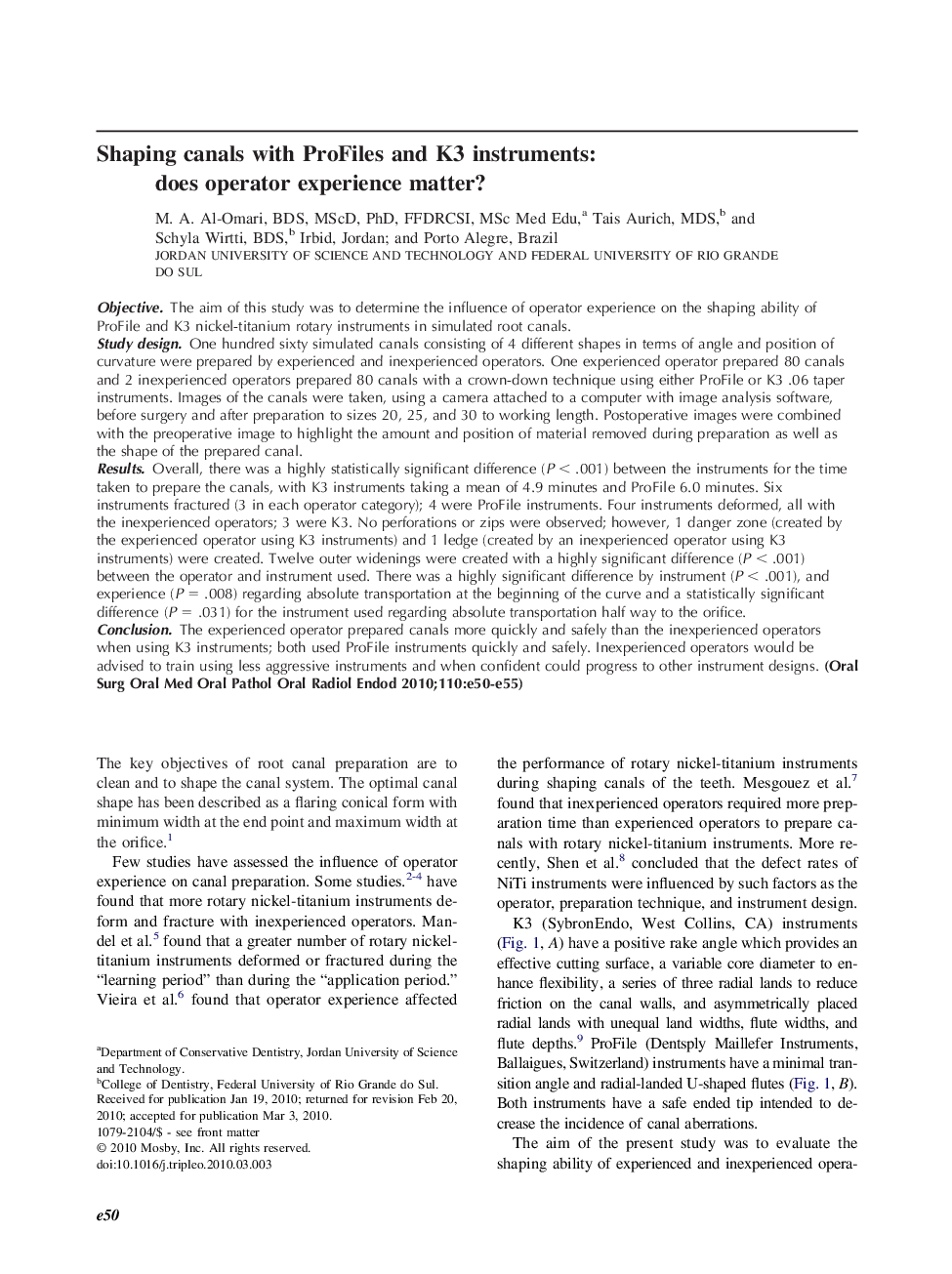| Article ID | Journal | Published Year | Pages | File Type |
|---|---|---|---|---|
| 3167437 | Oral Surgery, Oral Medicine, Oral Pathology, Oral Radiology, and Endodontology | 2010 | 6 Pages |
ObjectiveThe aim of this study was to determine the influence of operator experience on the shaping ability of ProFile and K3 nickel-titanium rotary instruments in simulated root canals.Study designOne hundred sixty simulated canals consisting of 4 different shapes in terms of angle and position of curvature were prepared by experienced and inexperienced operators. One experienced operator prepared 80 canals and 2 inexperienced operators prepared 80 canals with a crown-down technique using either ProFile or K3 .06 taper instruments. Images of the canals were taken, using a camera attached to a computer with image analysis software, before surgery and after preparation to sizes 20, 25, and 30 to working length. Postoperative images were combined with the preoperative image to highlight the amount and position of material removed during preparation as well as the shape of the prepared canal.ResultsOverall, there was a highly statistically significant difference (P < .001) between the instruments for the time taken to prepare the canals, with K3 instruments taking a mean of 4.9 minutes and ProFile 6.0 minutes. Six instruments fractured (3 in each operator category); 4 were ProFile instruments. Four instruments deformed, all with the inexperienced operators; 3 were K3. No perforations or zips were observed; however, 1 danger zone (created by the experienced operator using K3 instruments) and 1 ledge (created by an inexperienced operator using K3 instruments) were created. Twelve outer widenings were created with a highly significant difference (P < .001) between the operator and instrument used. There was a highly significant difference by instrument (P < .001), and experience (P = .008) regarding absolute transportation at the beginning of the curve and a statistically significant difference (P = .031) for the instrument used regarding absolute transportation half way to the orifice.ConclusionThe experienced operator prepared canals more quickly and safely than the inexperienced operators when using K3 instruments; both used ProFile instruments quickly and safely. Inexperienced operators would be advised to train using less aggressive instruments and when confident could progress to other instrument designs.
